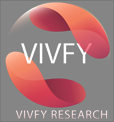
1. Patient (Indian) derived cancer cell lines
Cell lines are the workhorse of cancer research. The established and well-characterized cancer cell lines (such as HeLa, MCF7, MDA-MB) do not sufficiently represent the clinically important molecular characteristics of cancer. Patient-derived cell lines generated from tumor specimens show molecular characteristics relevant to the clinic and thus have tremendous potential for use in pre-clinical research. Also, they could be important tools in the understanding of key molecular and cellular processes underlying malignancy leading to the identification of novel biological therapeutic targets. Further, also to study cancer chemoresistance mechanisms, patient-derived cell lines from the chemotherapy-resistant patients could provide a new perspective to the understanding of chemoresistance. In addition, a scanty number of cell lines of Indian origin are established for pre-clinical use. We are generating and characterizing a wide variety of patient-derived breast and lung cancer cell lines of Indian origin.

2. Host-directed anti-viral drugs
The viral infections are typically treated using antiviral drugs, targeting mechanisms of viral replication. In most cases, due to selective pressure, the virus evolves faster to circumvent the targeted mechanism and become resistant to the drug. Besides, due to ever-evolving viruses, viral vaccine efficacy is a significant problem in effectively restricting viral diseases. Moreover, compared to the narrow spectrum of anti-viral drugs, the drugs that can induce host anti-viral response could have broad-spectrum anti-virals. The interferon response is one of the most robust anti-viral responses to DNA and RNA viruses including SARS-CoV2. We have screened and identified new small molecules that could induce host interferon response to restrict viruses growth including SARS-CoV2.

